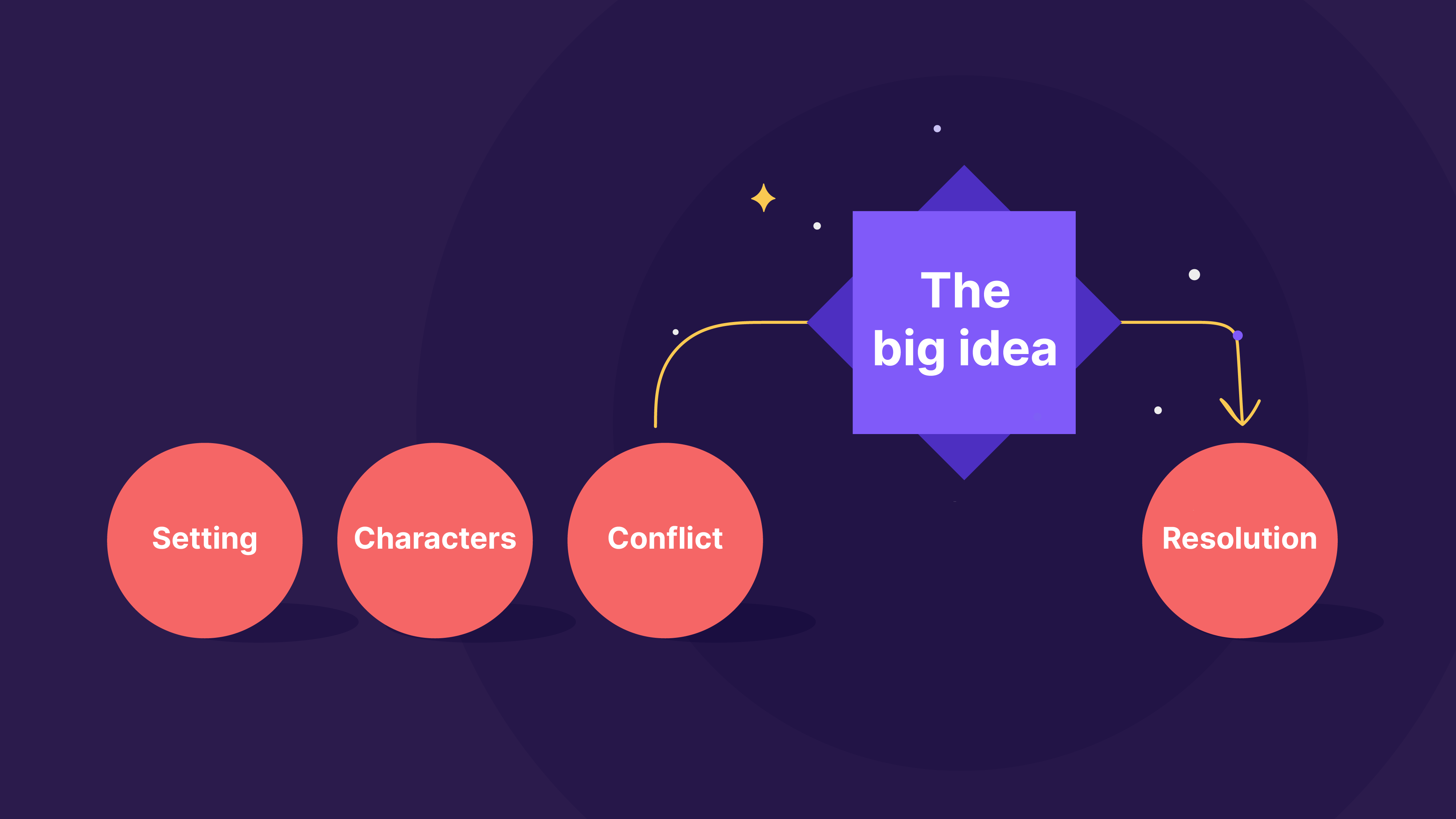13 May 2024
Keeping your audience engaged while trying to deliver your key messages can be difficult. A helpful way of doing this is by telling stories where you take your audience on a journey and appeal to their emotions. In this blog, we discuss storytelling components you can incorporate into your next presentation.
Every story-driven presentation has five main components. If any of these components are missing, your story will be incomplete and won’t have the impact you are hoping for.
The five components of presentation storytelling are:
Setting
This is where you build context and set the stage for everything that is about to happen in the story. The goal is to get the audience to really step into the character’s shoes and get on the same page with them. Try to describe the world you are painting for the audience as vividly as possible.
Characters
Just like you did with the first component of “setting,” it’s pivotal to develop the characters as well as you can. Describe them in detail—what their goals were, who they were, their backgrounds, their emotions, etc. The characters here are people who the audience can easily connect with and empathize with. It’s also extremely effective to give that character a name—or, if that character is you, make that crystal clear.
Conflict
The third component is “conflict.” And as the name suggests, this is the part where your story picks up momentum and gets interesting. It is also the part that can either make or break a story-driven presentation. The focus here is to build friction and tension. Explain the point of conflict in detail and highlight key aspects of the conflict. Make it as relevant as possible to your audience so they can feel the conflict themselves and begin to empathize with the characters.
Big idea
Now that you have established the setting, the characters, and the conflict, the next step is to unveil the “big idea” that will act as a bridge toward a miraculous resolution. Drum roll….
This “big idea” is the one you want your audience to remember and take away from the presentation if they forget everything else.
The big idea could be something like:
It was time for us to rethink our decades-old sales process because what we had was painfully flawed and ineffective.
Or
We needed to find better ways of listening to our customers.
Or
The industry was dying quickly, and so were we as a company. It was time for us to change direction and do it fast.
Structuring your presentation around one big idea is so important that we wrote a whole blog about it: How to effectively structure a “big idea” pitch for maximum impact.
Resolution
The resolution part is where you safely carry your audience through the conflict, using the bridge of the big idea and into the “resolution.” It is where you tell the audience how everything resolves with the help of that one big idea.
Most presentations make the mistake of stating their presentation design efforts with a resolution that makes the entire presentation boring and potentially could have the opposite effect since they already know that things will eventually end well. There is no conflict, therefore no interest, and therefore no impact.
We often see designers get carried away with visuals and graphics and completely neglect their stories. Remember that even the best-designed presentations will not have half the impact they could if there isn’t a solid story behind them. Don’t get us wrong. We are huge fans of presentation design ourselves, so much so that we wrote an entire blog on it How great PowerPoint design impacts your presentation.
If you are looking for a story-based presentation that cuts through the noise and delivers your message with nuclear-level impact then drop us a line. We are more than happy to help you define, outline, and present your story most effectively.







